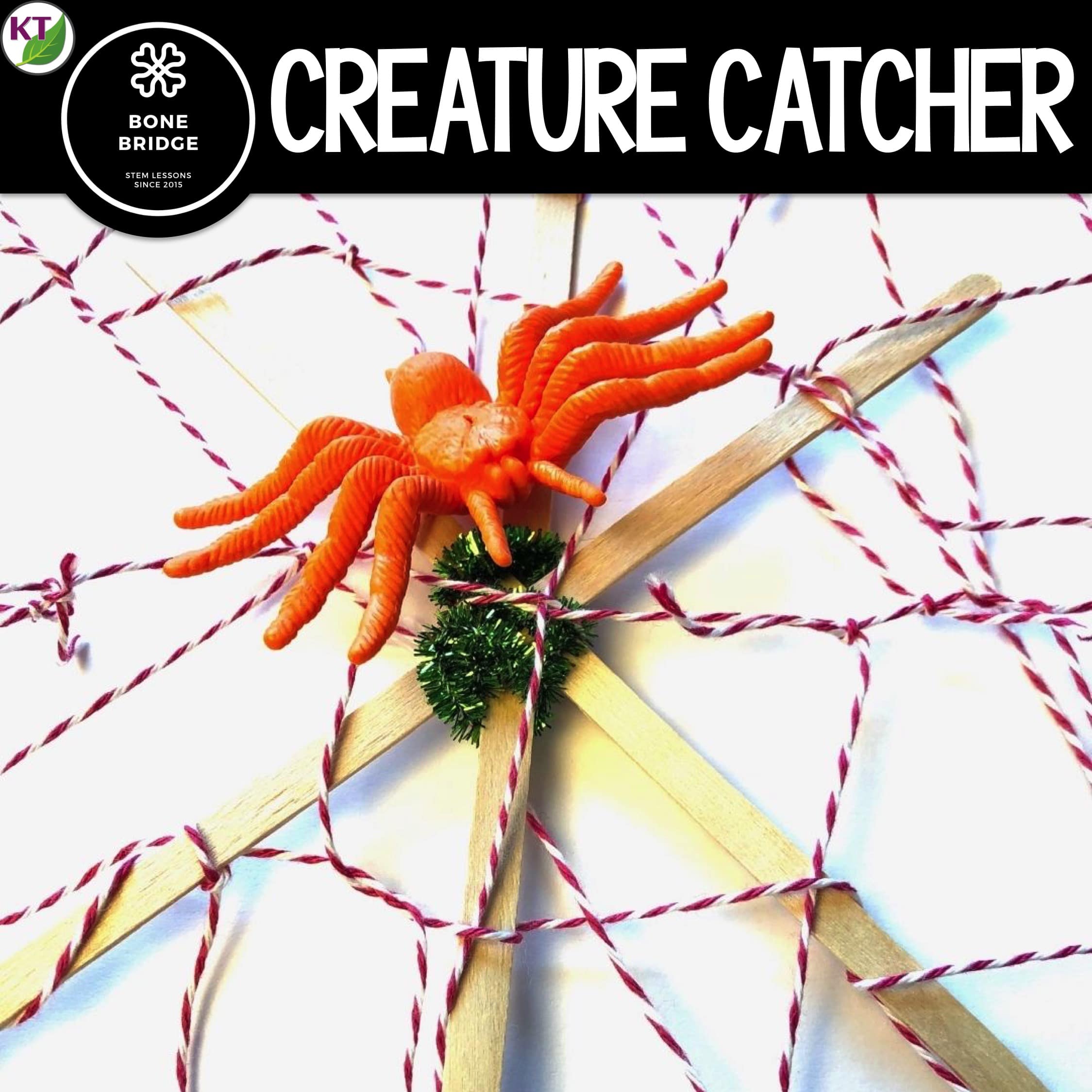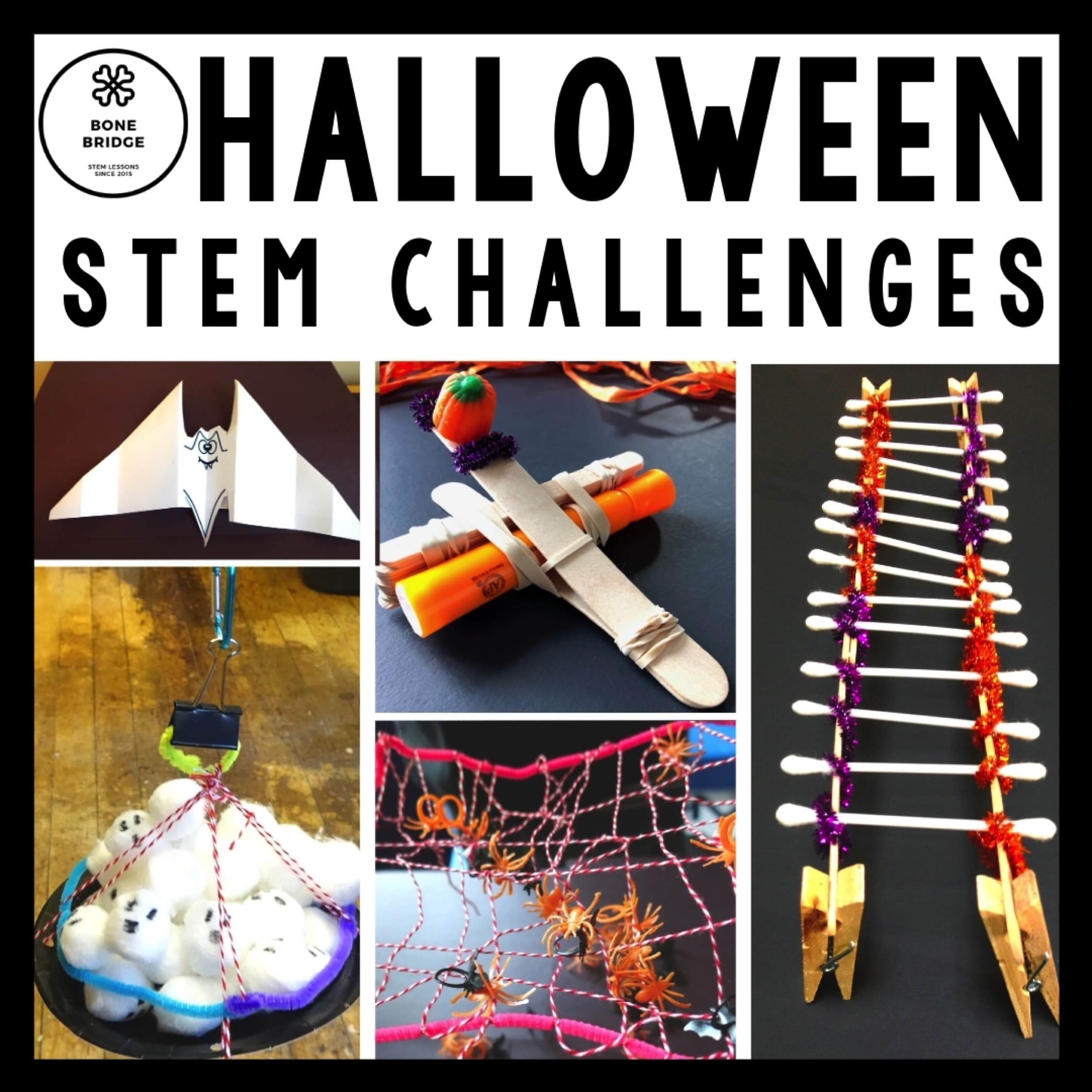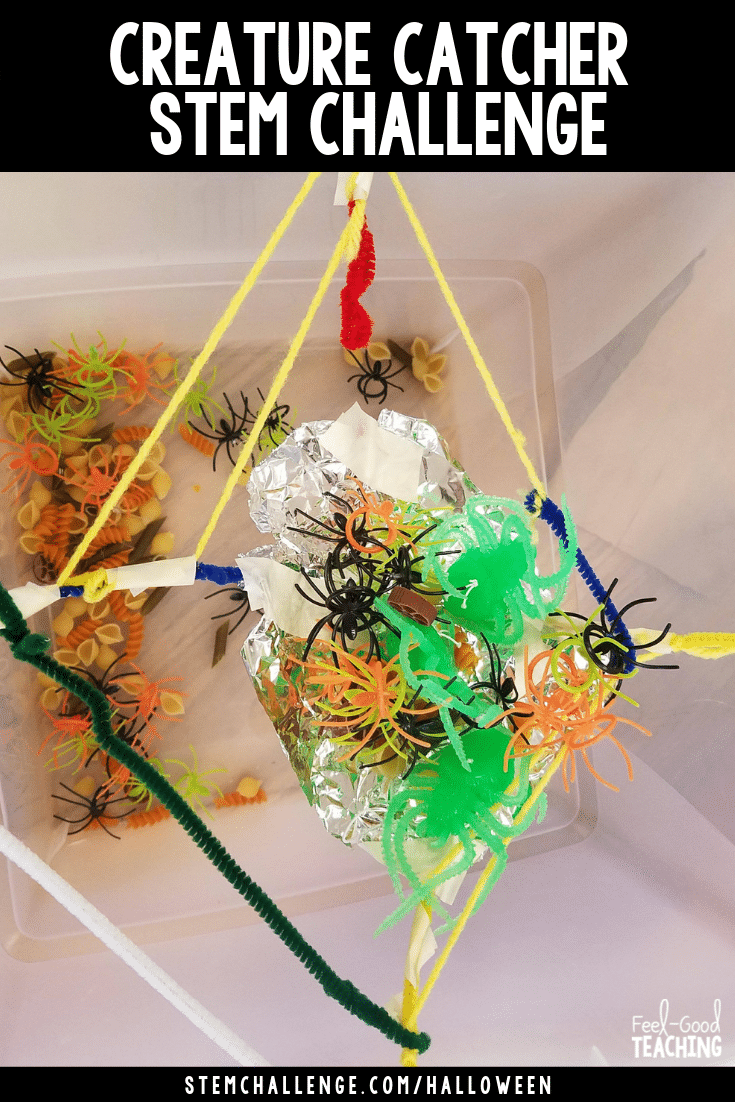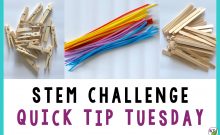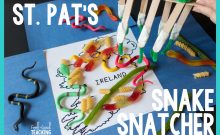Why call it a spider web challenge, when you can call it Creature Catcher? It’s so much more fun, don’t you think? Plus, it gives students more flexibility to be creative. When you present challenges more in terms of criteria & constraints, you’ll always end up with a better variety of designs than you do when you start with names that are too leading.
So, let’s talk about the elephant in the room: what if Halloween activities are a no-go in your classroom? Absolutely not a problem with Creature Catcher!
Use this lesson to launch into life science lessons like: ecosystems, habitats, food webs and food chains, or even adaptations.
There are so many ways to modify this challenge and connect your content standards! Ideas are included in the video below and in the resources.
Check out the video walk-through below to get an overview of the challenge, start-to-finish.
Scroll down for a video transcription.
What are teachers saying about Creature Catcher?
“One of the best things I have ever purchased on TPT! It was awesome and still very educational! Kids loved having fun while learning! I am buying more STEM from her now!”
“This was a favorite for my students:)”
“I have adapted this for use with Kinders through 8th graders and they all loved it! Thanks for providing such a fun and useful resource!”
“Extremely thorough and well written! Can’t wait for more of your STEM resources!”
“The students enjoyed the activity. The follow up questions were great.”
“My students had so much fun making the spider webs. Can’t wait to do some more of the activities.” (Feedback from the Halloween 5-in-1 Bundle. )
“My class LOVED this activity and enjoyed comparing their creature catchers. They were surprised by the different ways a group could be successful. Thank you for sharing.”
Check out the resources:
Want more Halloween STEM Activities? Check out the Halloween STEM Challenge Hub Page!
Video Transcription
Hi guys, today we are in week three of the Halloween STEM Challenges Creature Catcher. Premise of this one’s pretty simple. The students design a device to catch creatures. If you can’t do Halloween activities, that’s no problem here. Just go ahead and loop this into a study on food chains, food webs. Ha, food webs. Get it? Arachnids versus insects, that sort of thing. Let’s take a quick look at the materials for this challenge and the STEM Challenge cycle. This is a STEM Challenge Cycle you should follow for every challenge. I’ll define each step in another video. You can click on the title now to see the cycle explained. So looking at this, it is pretty straight forward, but it’s actually a lot tougher than it looks.
0:47
For set up, you’re going to want to get yourself some creatures. So these are actually a little bit bigger. I usually use those really small, cheap plastic spider rings. It’s a little bit early in the season and I couldn’t find them, so I’m going with these today. You’re going to want to decide how big a space you want the students to build over. Today, I got these propped up on clothes pins, but I actually don’t have the students do it that way. I just wanted you to be able to see it on camera. Students can even build just right flat on top of their desks, or on top of a bucket. And then, another nice thing to do is either give them a sheet of paper or card stock so they see the dimensions that they have to build their device on top of, or have students use just a ruler and tape off the dimensions. A couple of ways to make this harder would be to increase the space over which the students have to build their creature catcher. You can decrease the amount of materials you give them.
1:41
I have a couple other ideas if you want to push it even that much further, but it is a little sadistic. So the first idea is to precut the strings to a too short length. So if the students have to build over a 12 by 12-inch mat, precut the strings at eight inches, or five inches. My next idea might actually be bordering on cruel, but limit the amount of knots they’re allowed to tie. So in the entire design, they can only have four tied knots. Or you can choose another number, but either way, that definitely makes it a lot more difficult to accomplish. So when you get to the point where you’re going to actually test the designs and measure the results, my recommendation is to partner up teams. So for example, if this design is from group B, then I would be from group A, and my job is to sprinkle the creatures all over the design, trying to be fair. But in addition to being fair, I also need to think about the working space.
2:38
So you can see that this design doesn’t cover the entire mat, but the criteria in the constraints were to build a creature catcher over that entire space, so it’s completely acceptable for me to put creatures anywhere above that working space. You can also do this over a bucket and have the students hold the creature catcher stable, but I find this is just as easy, if not easier. So now that I’ve sprinkled the creatures, I in group A would remove myself in this situation, and group B would send its members over to lift their design off the table and see how many creatures are held, and how many fall through. Now this is going to be a little bit tricky because I’m one person, and they would probably have one person on each side of this design in order to carefully lift it up, so I’m going to end up dropping more than I probably should.
3:29
All right, this design did reasonably well. It is another thing to think about that if you have older students, I would definitely not use spiders this big. I do have small hands, but you can see this takes up almost the entire palm of my hand. So I would definitely use the smaller spider rings for most groups of students, and you can usually get those at a dollar store, Target, Walmart. You can even order them off Amazon, but you tend not to do quite as well price wise, which I know is shocking because it’s Amazon and usually it’s so much cheaper. So now you have the basics and you’re ready to go and do this in your class on your own, but I always try to leave you wanting just a little bit more, so if I have done my job, then you will want to check out the resource which includes more modifications, cross-curricular connections, student
handouts, and more. Check it out.
4:14
Don’t have time to put together handouts and lesson plans? No worries, it’s already done and it contains everything you need, including modifications for use 2nd through 8th graders. You still need to gather the simple materials, of course, but the hard parts are done. You’ll get Aligned Next Generation Science Standards for grades 2 through 8, links to my STEM Challenge professional development videos to help you get the most from each challenge, and the Creature Catcher Materials list. In Teacher Tips, you’ll find premise and setup, how to increase or decrease difficulty through the criteria and constraints list, measuring results, and cross-curricular extension suggestions, which will be helpful if you need to prove this is not just a Halloween activity. You’ll find an editable Criteria and Constraints list so you can tailor the challenge to your students. For Student Handouts, there are two versions. Four-page expanded room for response for younger students, and a two-page condensed space paper saver version for older students. You’ll also find a set of group discussion questions.
5:05
In the Extension Handouts, you’ll find task card templates for student made questions related to the challenge. Use them for a game of scoot, a center for early finishers, or an option for sub plans. You’ll also get process flow templates.
This resource is available individually and as part of the discounted Halloween and Mega STEM Challenge bundles. Links can be found in the description below the video. Your students are going to love it, and they’re going to come away with a new appreciation for spiders because it is a lot more difficult to do than you think, and even when they do it well, it doesn’t have the beauty of a spider web usually. Be sure you like and subscribe, and come on back next week for week four, Treat Toss.
PIN ME




